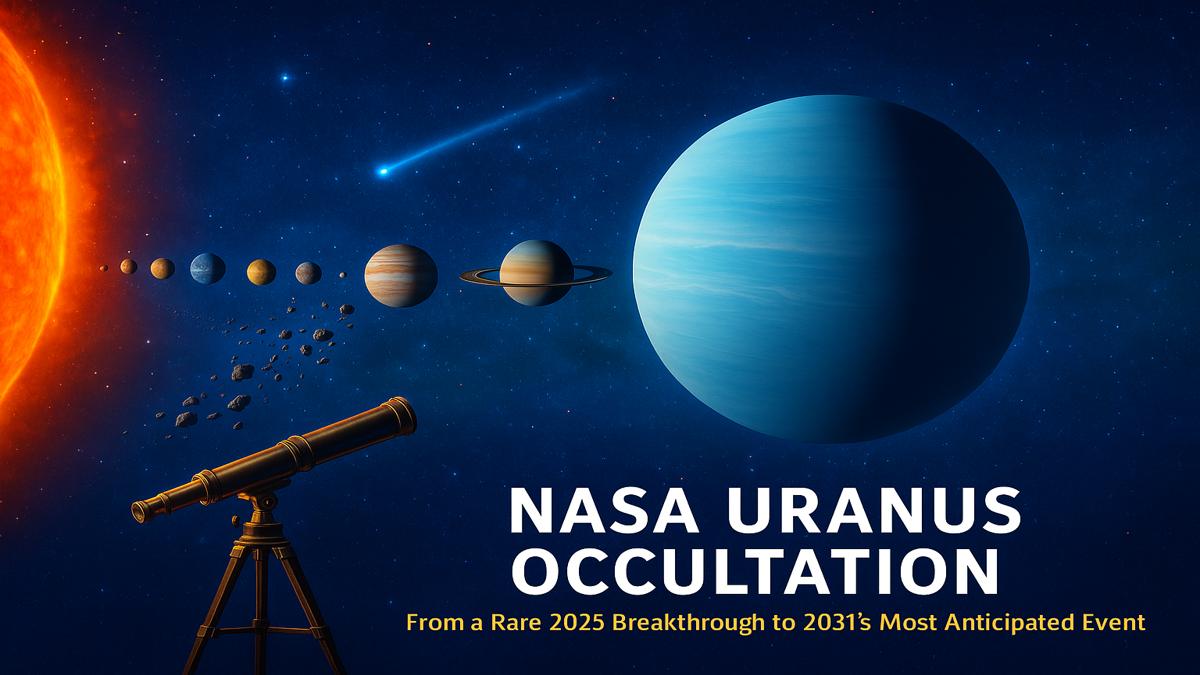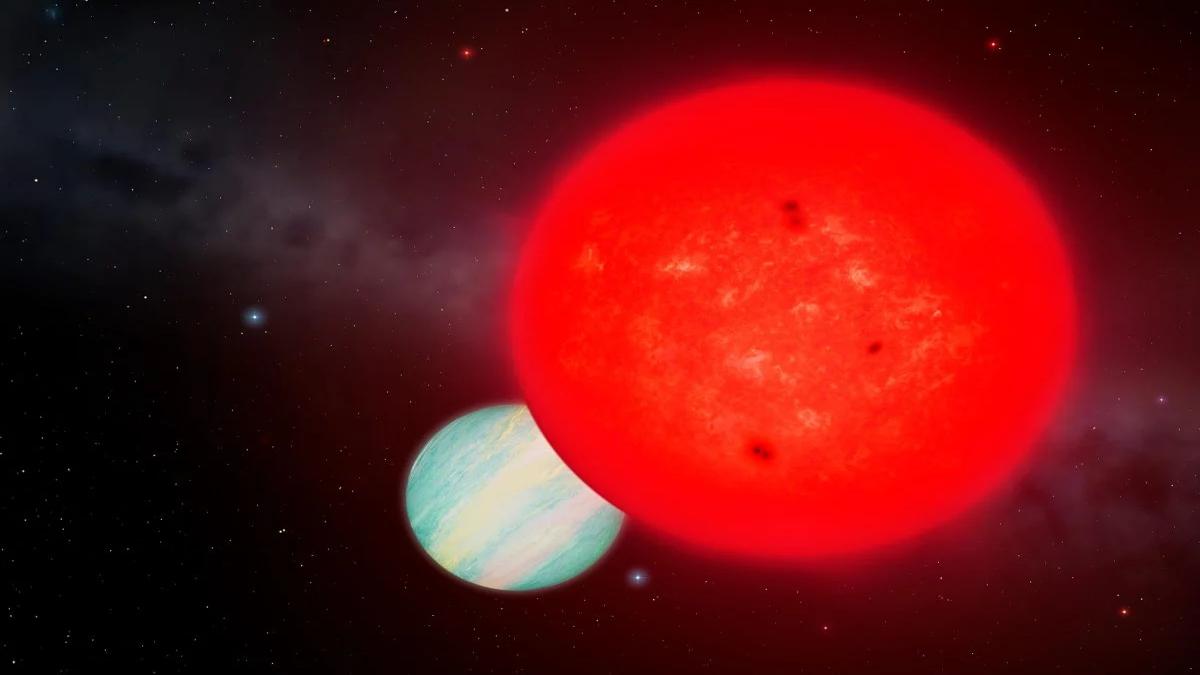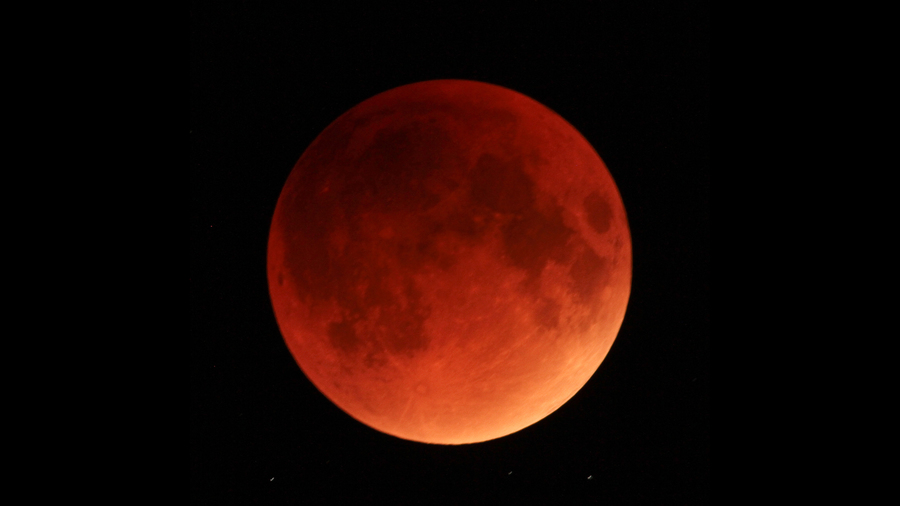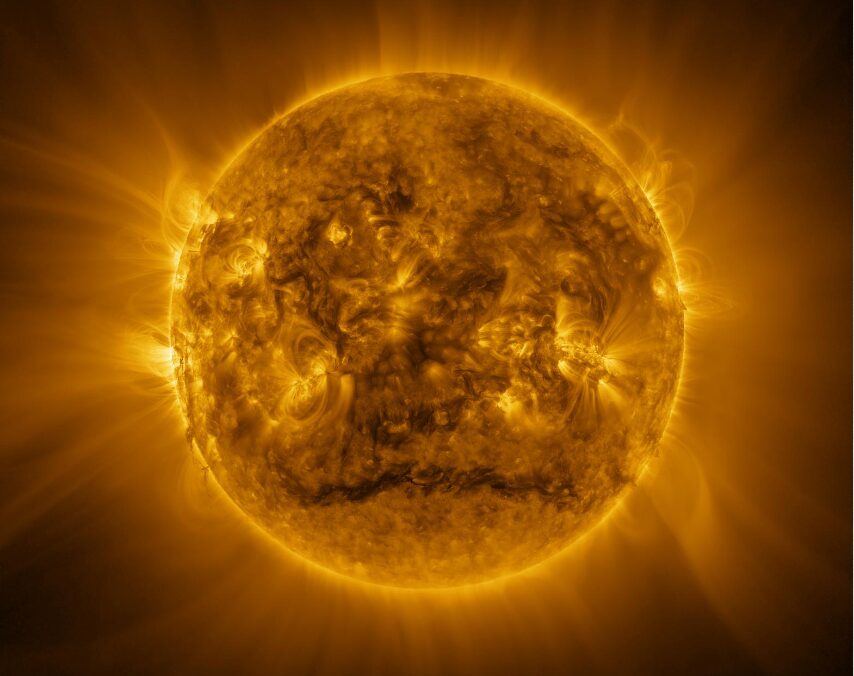NASA Uranus Occultation is fast becoming one of the most talked about celestial events of the decade. The NASA Uranus Occultation is expected to be a turning point in planetary research. Starting June 4, 2025, a remarkable event will start a rare series of astronomical alignments for Uranus that will lead to discoveries drastically altering our view of the solar system by 2031. What makes this so special and why should you care?
Let’s discover the astronomical phenomenal that is making waves at NASA and beyond.
🔭 What Is NASA Uranus Occultation? and Why Is It So Rare?
An occultation occurs when a celestial body, such as a moon or planet, moves directly in front of another object, blocking it from view for a period of time. When it involves Uranus, the stakes are astronomically high.
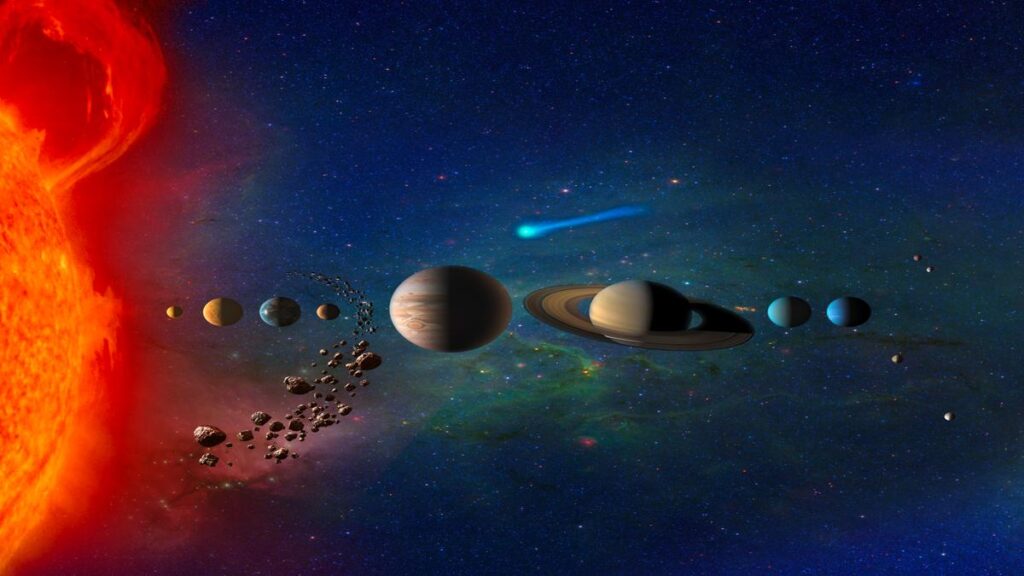
Uranus is tilted on its side and spins in the opposite direction that most other planets in the solar system do, with rings and moons made of ice that scientists are still attempting to comprehend. NASA’s Jet Propulsion Laboratory states that any chance to study Uranus during an occultation is scientifically golden.
The NASA Uranus occultation happening in 2025 will allow scientists to study the starlight passing through Uranus’ atmosphere, which aids scientists in obtaining detailed information about its temperature, its composition, and perhaps even some new moons.
🚀 Why the 2025 Breakthrough Matters So Much?
The NASA Uranus occultations involving Uranus are rare, in part because they require precise timing and positioning of Earth, Uranus, and a touch of planets millions of light years away–unlike solar or lunar eclipses we more easily predict ahead of time.
It’s also unique from a configuration of ground-based telescopes and NASA’s Hubble and James Webb Space Telescopes will track the 2025 NASA Uranus occultation as repository viewing time like we have not seen in yearsinguish its developments a return of Cassini type process, but with Uranus.
“This is a once-in-a-generation event,” said Dr. Robert French, a planetary scientist from SETI. “We may discover atmospheric waves, auroras, or even ring distortions.”
🧊 What’s So Mysterious About Uranus?
For many decades, Uranus has frustrated astronomers with its odd magnetic field, icy atmosphere, and potential subsurface ocean. Uranus is one of the most poorly explored planets, having only been visited once, by Voyager 2 in 1986. For over 30 years, scientists have been clamoring for a mission to Uranus.
NASA recently became interested in Uranus again in 2022 when a decadal survey stated that Uranus is a “high priority” for further missions. The NASA Uranus Occultation occurring in 2025 could be the initiation for potential missions, such as the Uranus Orbiter and Probe which is currently under consideration by NASA.
Learn more about how NASA selects flagship planetary missions for the coming decade.🌠 A Countdown to 2031: What Comes After 2025?
While 2025 is the beginning, a chain of occultation events will continue through 2031. Each event offers different angles and timings for Uranus’ shadow paths across Earth, allowing global collaborations among observatories.
This time series is essential. Why?
- It lets scientists track changes in Uranus’ atmosphere over time.
- They can monitor how solar wind interacts with its magnetosphere.
- With enhanced technology, even amateur astronomers may contribute to the data pool.
- The NASA Uranus Occultation could reveal new moons and ring distortions.
As early as June 2025, rudimentary radio signals and wave patterns captured and recorded by NASA’s Deep Space Network provided insight into unexpected oscillations within Uranus’ outer-ring system, indicating possible unknown features of their electronic structure. Like our blog on the Dead Satellite Radio Signal Mystery, this discovery startled scientists and may correlate directly with the predicted occultation.
🌌 Internal Discovery: How This Event Could Mirror Solar Storm Impacts
Remember the recent buzz around the Solar Storm of 2025? Just as those geomagnetic disruptions were potentially a threat to our satellites, perhaps the NASA Uranus occultation will reveal how deep-space weather systems impact outer planets.
As solar cycle 25 is currently at its peak, which means radiation and charged particles may excite Uranus’ magnetosphere, potentially providing some insight into some of the odd radio bursts, and plasma waves that scientists are trying to detect.
🔍 Linking It All Together: A New Age of Exploration
Whether it’s the parallel universe rumor sparked by misread NASA data or real discoveries like the Sun’s South Pole, space has always intrigued the public. The NASA Uranus Occultation offers a real, science-backed spectacle that could live up to the hype—and even surpass it.
If successful, the upcoming observations may:
- Confirm or debunk existing theories about Uranus’ tilt and ring dynamics.
- Advance exoplanet research by drawing analogies with ice giants in other systems.
- Revive space agencies’ interest in deep space missions beyond Mars and Jupiter
🧠 Final Thoughts: Why You Should Pay Attention?
The NASA Uranus Occultation isn’t just a passing opportunity in the cosmos. It is a significant scientific tea. Think “lunar eclipse” but with new research potential. There will be a global audience prepared to spectate this remote, icy planet and there will be some exciting discoveries to be made between 2025 and 2031.
For students, scientists, and space enthusiasts alike, it will offer the kind of wonder and curiosity that a lot of us forget exists and just how much we still have to learn about the universe.
Frequently Asked Questions
This rare event happens when Uranus passes in front of a distant star, helping NASA analyze its rings and atmosphere.
The most notable Uranus occultation will occur in April 2025, with more events through 2031.
It gives NASA a chance to study Uranus’ atmosphere, rings, and possible moons using filtered starlight.
Yes, with a telescope and clear skies, some regions may view it. NASA might also provide livestream coverage.
It will capture deep infrared data during the event to map Uranus’ temperature layers, cloud activity, and ring composition.
No. This is a visual astronomical alignment with no effect on Earth. The benefit lies in scientific discovery.

